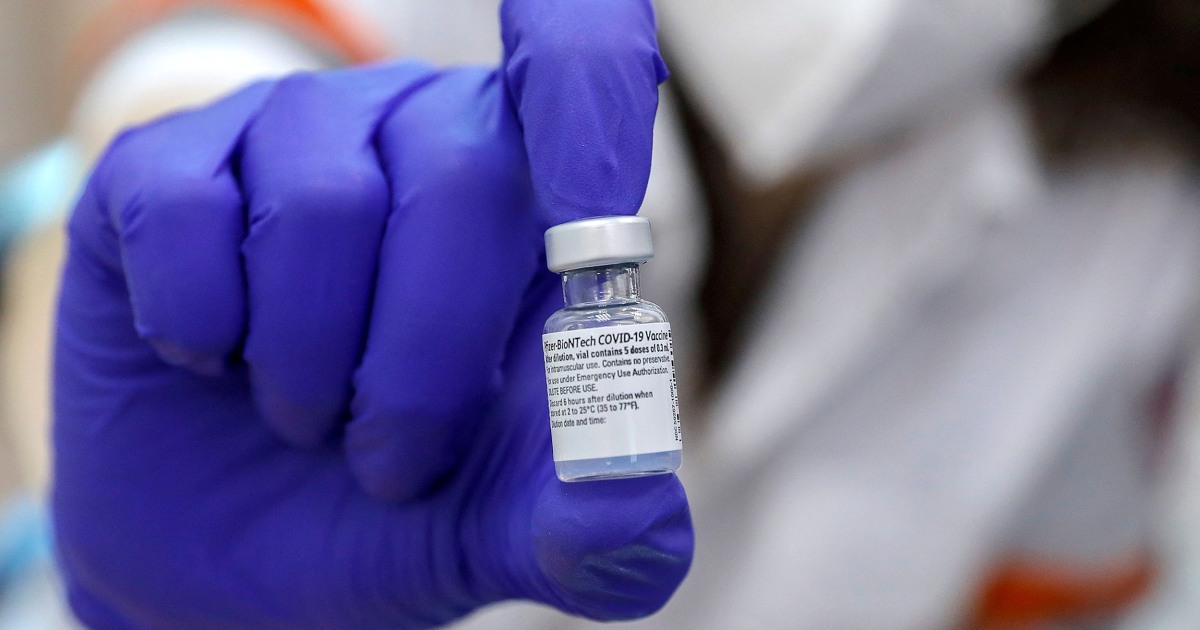Pfizer Inc and BioNTech SE said on Wednesday that Israel’s real-world data suggest that their Covid-19 vaccine is 94 percent effective in preventing asymptomatic infections, meaning that the vaccine can significantly reduce transmission.
The companies also said that the latest analysis of Israeli data shows that the vaccine was 97 percent effective in preventing symptomatic illness, serious illness and death. This is largely in line with the 95 percent effectiveness that Pfizer and BioNTech reported in the vaccine’s final-stage clinical trial in December.
Download the NBC News app for complete coverage of the coronavirus outbreak
The analysis also shows real evidence of the vaccine’s effectiveness against a highly infectious variant of Covid-19 first discovered in Britain, known as B.1.1.7. More than 80 percent of the samples tested when the analysis was performed were B.1.1.7 variants.
There were only a limited number of infections in Israel caused by the so-called South African variant – known as B.1.351 – so they were unable to assess the effectiveness of the vaccine against this variant.
Israel is leading the world in its implementation of vaccination, in part due to an agreement to share data with Pfizer and BioNTech. As of Wednesday, about 55 percent of its 9 million population had received at least one dose of the Pfizer / BioNTech Covid-19 vaccine, according to data from the Ministry of Health, and 43 percent received both doses.
According to the analysis, unvaccinated individuals were 44 times more likely to develop symptomatic Covid-19 and 29 times more likely to die from Covid-19 than those who had received the vaccine.
The data, collected between 17 January and 6 March, have not yet been peer-reviewed.
The Israeli Ministry of Health previously found that the Pfizer vaccine developed with BioNTech in Germany reduces infection, including in asymptomatic cases, by 89.4% and in symptomatic cases by 93.7%. This was in data collected between January 17 and February 6.

